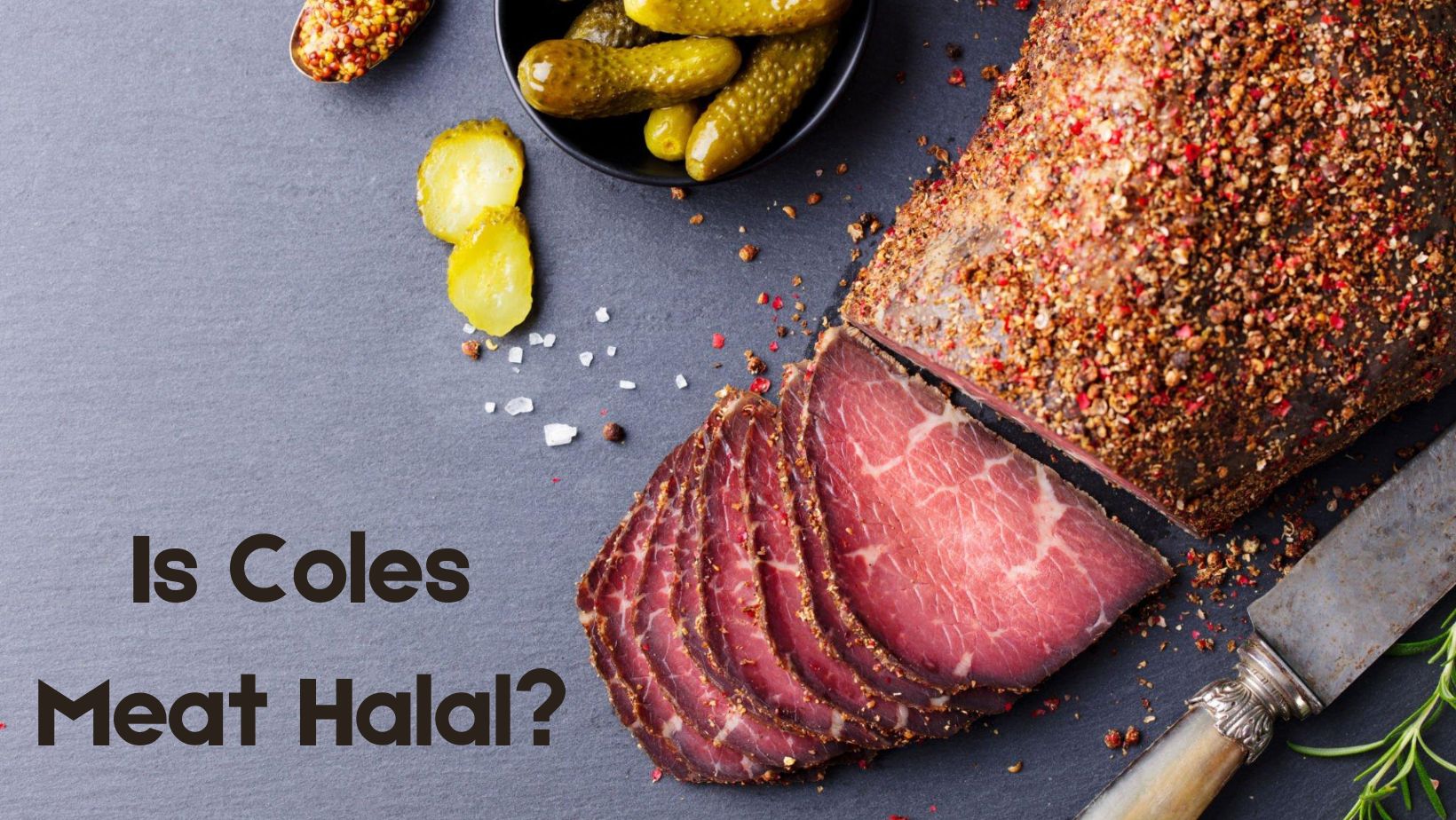Crawfish, also known as crayfish or mudbugs, are a popular seafood delicacy enjoyed by many people around the world. However, when it comes to dietary restrictions and religious considerations, such as halal, it is important to understand the permissibility of consuming crawfish within the framework of Islamic dietary guidelines. The question of whether crawfish is halal is a topic of discussion among Muslims who adhere to halal dietary practices.
In this article, we will explore the factors that determine the halal status of crawfish, examining key principles and considerations in Islamic dietary laws. By delving into these aspects, we aim to provide a comprehensive understanding of whether crawfish can be considered halal and to assist individuals seeking clarity on this matter within the context of their dietary choices and religious beliefs.
What is Crawfish
Crawfish, also known as crayfish, are freshwater crustaceans that are widely consumed around the world. They belong to the clade Astacidea and are part of the order Decapoda, which includes various other crustaceans such as crabs, lobsters, and shrimp.
They have a distinctive appearance, resembling miniature lobsters, with a size ranging from 3 1/2 to 7 inches. They have a total of ten legs, with the front two legs modified into large claws, known as chelae, used for defense and capturing food.
Crawfish have a long history in Louisiana’s culture, dating back to the native Americans and early European settlers. They were abundant in the swamps and marshes across south Louisiana and were a favorite food of the early residents. Today, Louisiana accounts for approximately 90% of the U.S. farmed and wild crawfish production, with southern Louisiana being the heart of the industry.
In the culinary world, crawfish have been enjoyed as a delicious seafood treat for many years. They were introduced to the culinary world in the 19th century and have since become a staple on restaurant menus, in grocery stores, and in homes worldwide. Chefs and home cooks have developed a variety of recipes to make the most of crawfish’s delicate flavor, including boiled, chilled, curried, grilled, and more.
Is Crawfish Seafood
Yes, crawfish is considered seafood. Although crawfish predominantly live in freshwater environments such as rivers, lakes, and ponds, they are classified as seafood because they are aquatic animals. Seafood encompasses all aquatic animals that are consumed by humans as food, including fish, shellfish, crustaceans, mollusks, and echinoderms. Crawfish have a flavor similar to shrimp and lobster, and they are popularly consumed in various cuisines around the world. Whether it’s in a traditional crawfish boil or prepared in other delicious recipes, crawfish are widely recognized as a type of seafood.
Is Crawfish a Shellfish
Yes, crawfish is considered a shellfish. Shellfish is a term used to describe exoskeleton-bearing aquatic invertebrates that are consumed as food, including various species of mollusks, crustaceans, and echinoderms. Crawfish fall under the category of crustaceans, which includes shrimp, crayfish, crabs, and lobsters. They have a hard exoskeleton and are related to lobsters. While most shellfish are harvested from saltwater environments, crawfish are primarily found in freshwater habitats such as rivers, lakes, and ponds. However, they are still classified as shellfish because they have a shell-like exterior and belong to the same category of exoskeleton-bearing aquatic invertebrates.

Types of Crawfish
There are several types of crawfish that are edible. Crawfish, also known as crayfish, mudbugs, or crawdads, are small freshwater crustaceans that are consumed in various cuisines. The most commonly eaten part of a crawfish is the tail, but other portions, such as the claw meat, may also be eaten in certain dishes.
When it comes to eating crawfish, it is normally the freshwater species that are eaten, but there are over 250 species of crawfish native to North American rivers, lakes, canals, swamps, wetlands, and irrigation ditches, and around 400 species can be identified worldwide
The specific types of crawfish that are considered edible can vary depending on the region and availability. Here are some notable types of crawfish that are consumed:
- Red Claw (Cherax destructor): The red claw crayfish is known for its mild and sweet flavor. It has a tender texture and is often described as having a delicate taste similar to lobster.
- Common Yabby (Cherax destructor): The common yabby has a slightly stronger flavor compared to other crayfish species. It offers a slightly nutty and earthy taste, making it a popular choice for various culinary preparations.
- Red Swamp Crayfish: Red swamp crayfish, commonly used in Louisiana-style cuisine, has a robust and slightly briny flavor. It is often associated with spicy and flavorful seasonings, particularly in traditional crawfish boils. The meat is tender and succulent, with a hint of sweetness.
- Spiny-Cheek Crayfish: The spiny-cheek crayfish offers a delicate flavor similar to other edible crayfish varieties. It is often compared to the taste of lobster or shrimp. The meat is tender and has a slightly sweet and briny flavor profile.
- Virile Crayfish: The virile crayfish has a flavorful and succulent meat with a taste reminiscent of lobster. It is often used in various culinary preparations due to its tender texture and mild sweetness.
Is Crawfish Halal
The halal status of crawfish (also known as crayfish) in Islam is a topic that involves different opinions and interpretations within different schools of thought.
- Sunni School of Thought: According to the Sunni view, which includes the Hanafi, Shafi’i, and Maliki madhabs, crawfish is considered halal. This is based on the general principle that all creatures resembling the shape of fish are regarded as halal. Therefore, in the Sunni school, crawfish is permissible for consumption.
- Hanafi Madhab: However, within the Hanafi school of thought, which is one of the Sunni madhabs, only fish among seafood is considered halal. Therefore, according to the Hanafi view, crayfish would not be permissible for consumption as it is not classified as a fish.
- Shia School of Thought: The permissibility of consuming crayfish for Shia Muslims is not explicitly mentioned in the sources. As with many issues in Islamic jurisprudence, opinions may vary within the Shia school of thought. The ruling may depend on the interpretation and guidance of the scholars followed by Shia individuals or communities. Therefore, it is recommended for Shia Muslims seeking a definitive answer to consult knowledgeable scholars within their specific tradition.
In summary, while crawfish is considered halal in the Sunni school of thought, there is a difference of opinion within the Hanafi madhab, which does not classify crayfish as halal. The halal status for Shia Muslims may vary depending on the interpretation and guidance of their scholars. It is important for individuals seeking a clear ruling to consult with knowledgeable scholars or authorities within their respective Islamic traditions.
Health Benefits and Nutritional Value of Crawfish
Crawfish are not only provide a delicious culinary experience but also offer several health benefits. Here is some information about the health benefits and nutritional value of crawfish:
- Nutritional Value: Crawfish are low in fat and carbohydrates while being a good source of protein. A 3-ounce serving of cooked crawfish contains approximately 70-80 calories, 14 grams of protein, and trace amounts of fat and carbohydrates. They also provide essential vitamins and minerals such as vitamin B12, vitamin B6, phosphorus, niacin, and manganese.
- Lean Protein: Crawfish are considered a great source of lean protein. A serving of crawfish, typically around three ounces of peeled crawfish tails, offers a low-calorie and low-fat protein option. Protein is essential for various bodily functions, including muscle growth and repair, and helps keep you feeling full and satisfied.
- Omega-3 Fatty Acids: Certain species of crawfish, such as the red swamp crawfish, contain heart-healthy omega-3 fatty acids. Omega-3 fatty acids are known to have anti-inflammatory properties and are beneficial for cardiovascular health.
- Essential Vitamins and Minerals: Crawfish are a good source of vitamins and minerals, including vitamin B12, vitamin B6, phosphorus, and niacin. Vitamin B12 is important for maintaining healthy nerve function and producing red blood cells. Vitamin B6 supports brain development and function, and phosphorus plays a crucial role in bone health. Niacin is essential for energy metabolism and maintaining healthy skin.
- Low in Cholesterol: Although crawfish contain cholesterol, they are relatively low in cholesterol compared to some other sources of protein. Consuming crawfish in moderation as part of a balanced diet is generally considered safe and does not significantly impact cholesterol levels for most healthy individuals.
- Clean Source of Seafood: Crawfish are typically found in freshwater environments and are often an indication of clean waters. They generally inhabit streams, rivers, and ponds that are relatively pollution-free.

How to Cook Crawfish
Cooking crawfish can be a delicious and enjoyable culinary experience. Here are some general steps and tips on how to cook crawfish:
Cleaning Crawfish
Before cooking crawfish, it’s essential to clean them properly to remove any mud or impurities. One method to clean crawfish is by purging them. Deposit live crawfish in a large container filled with clean water and let them sit for about 15-20 minutes. This process encourages them to purge any mud and waste from their digestive system. Repeat this step a couple of times until the water remains clear.
Boiling Crawfish
Boiling is a popular method to cook crawfish. Here’s a step-by-step guide to boiling crawfish:
- Fill a large pot with water, leaving enough space to accommodate the crawfish.
- Add seasonings such as Cajun spices, salt, garlic, onions, and other desired flavors to the water. The exact measurements and spices used can vary based on personal preference and regional traditions.
- Bring the water to a rolling boil.
- Carefully add the live crawfish to the boiling water. It’s advisable to do this in batches to maintain the water’s boiling temperature.
- Boil the crawfish for about 5-10 minutes or until they turn bright red and the tails curl. Be careful not to overcook them, as they can become tough.
- Once cooked, turn off the heat and let the crawfish soak in the seasoned water for a few minutes to absorb the flavors.
- Drain the crawfish and transfer them to a serving platter or a large tray lined with newspaper or butcher paper for a traditional crawfish boil experience.
- Serve hot and enjoy!
What Are Some Popular Crawfish Dishes
Crawfish is a versatile ingredient that can be used in various dishes, both traditional and innovative. Here are some popular crawfish dishes:
- Crayfish White Bee Hoon: A Singaporean dish that features crayfish cooked with bee hoon (rice vermicelli) in a light and sweet broth.
- Crawfish Etouffee: A classic Louisiana dish made with crawfish tails smothered in a rich and flavorful sauce, served over rice.
- Crawfish Macaroni and Cheese: A delicious twist on traditional macaroni and cheese, this dish combines tender crawfish meat with creamy cheese sauce and pasta.
- Crawfish Bread: A popular Louisiana favorite, crawfish bread features a savory filling of crawfish tails, cheese, and seasonings stuffed inside a loaf of French bread.
- Crawfish Cornbread: A variation of traditional cornbread, this dish incorporates crawfish, jalapeños, and other ingredients for a flavorful twist.
- Crawfish Boil: A quintessential crawfish dish, a boil involves cooking live crawfish in a seasoned broth along with other ingredients like corn, potatoes, and sausage. It’s a festive and social dining experience.
- Crawfish Etouffee Balls: Leftover crawfish etouffee can be transformed into delicious fried balls, offering a unique way to enjoy the flavors of etouffee.
- Crawfish Cheesecake: A savory twist on the traditional sweet dessert, crawfish cheesecake combines cream cheese, crawfish meat, and spices to create a rich and flavorful appetizer or main course.
- Crawfish Hand Pies: These handheld pastries are filled with a savory mixture of crawfish, vegetables, and seasonings, making them a delicious snack or appetizer.
- Crawfish Boil Sides: When serving a crawfish boil, popular side dishes to accompany the flavorful crawfish include cornbread, coleslaw, jambalaya, hush puppies, grilled vegetables, potato salad, and more.






